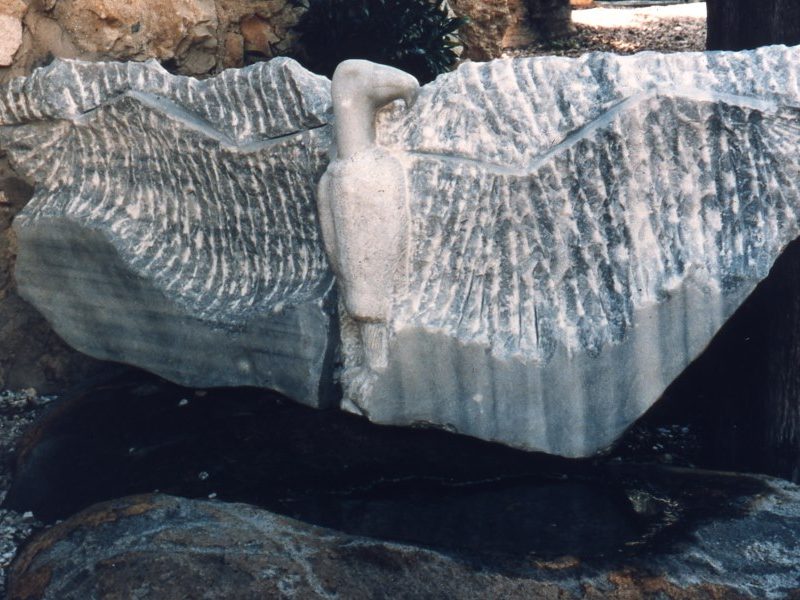Avi Sperber’s beautiful stone sculptures are not confined by the artist’s definition of what they signify. Art is in its simplest terms an integration of the individual (artist) and for the universal (the artwork) and the meaning brought to it by the observer. Here I observe Sperber’s work in a way less restricted and less polemical and more universal than the artist himself does.
Sculpture is above all art dependent on material. In sculpture the material bears a message and its choice defines its meaning. Stone speaks for itself. No material has been to man’s expression and more universal over the eons of his existence: First as the substance of tools – made by us and what we are – then as material for shelter, and ultimately as the fabric for the realization of the spiritual in the physical.
Stone speaks loudly with its silent voice of man’s religious guest the many distant generations. From the 25’000 years old “Halstadt fertility God”; to the Canaanite lions of Hazor; from stonehenge to the giant heads of Ester Island; from the Greek and Roman deities to the father of the Church itself, Peter, whose name means rock – stone in its immortality has been the material on which man chose to carve his spiritual guest. This is no more so than among the indigenous peoples of South America, the Inca and Aztec, who wrote depicted their gods in stone carved friezes on their many temples.
It is appropriate that Sperber has choose stone to express the universal message embodied in his carved symbols.
They belong to our world no less that of the North American Indian and to other indigenous peoples. For we were all once an indigenous peoples. They are the generic symbols of pre-agricultural mankind derived from nature and present among all cultures. In that regard they are evocative for a “Western” audience.
No matter how distant from our own present moment in time, we too in our far past in such a culture. Those images and those values yet remain deeply imbedded in our cultural subconscious and physical instincts, even as we choose to ignore them.
Thus quietly as the stone itself, we relate to Sperber’s sculptures knowingly and nostalgically recalling a world when we too lived in harmony with our environment. Today the sculpture remind us of our own distant past-symbols are those of the Native American – but they may have been carved, as well, on the cave walls of Lascaux in France some thirty eons ago.
The beauties of the sculptures are self evident and their message, we can all acknowledge, is imperative one-even as we choose to admire the sculptural from and ignore its substance. Sperber has chosen the American Indian as his subject, but his symbols are far more universal. The depredation of the American Indian is well known today.
But our ongoing lack of respect for indigenous cultures merely mirrors our divorce from the natural world, whose echoes remain “carved in (Sperber’s) stone” and whose victims we join.
Michael Sternberg
Multinational Force and Observers, director-general’s representative in Israel

 The Third Millenium / Stone Age by Doron Pollack
The Third Millenium / Stone Age by Doron Pollack